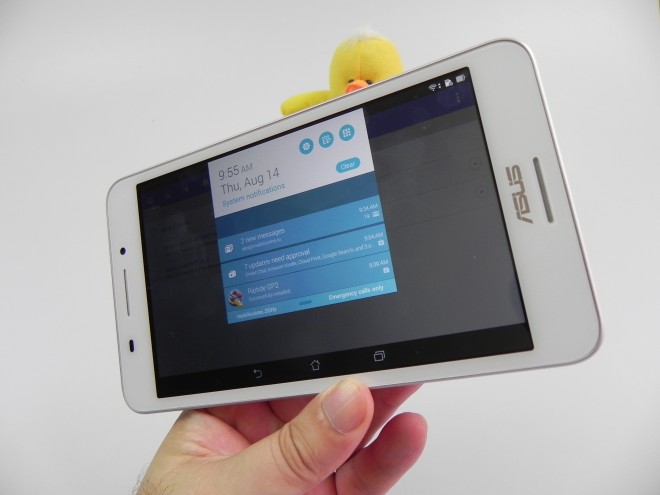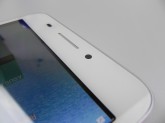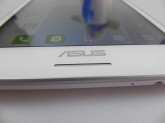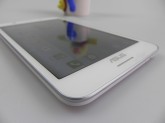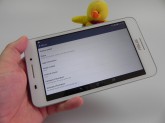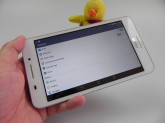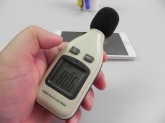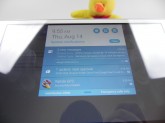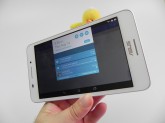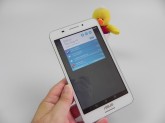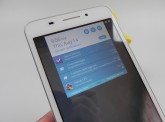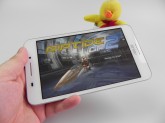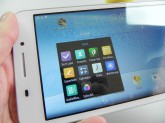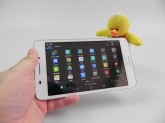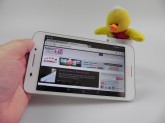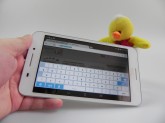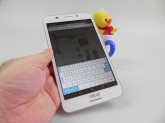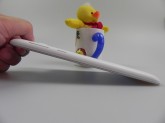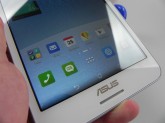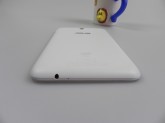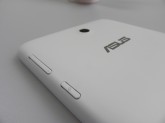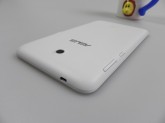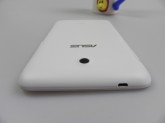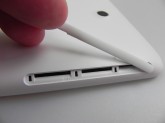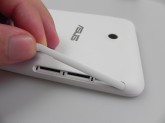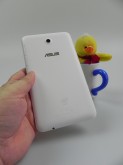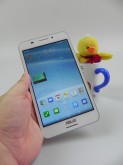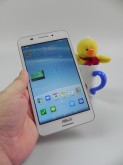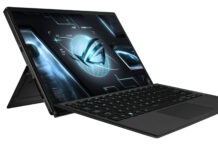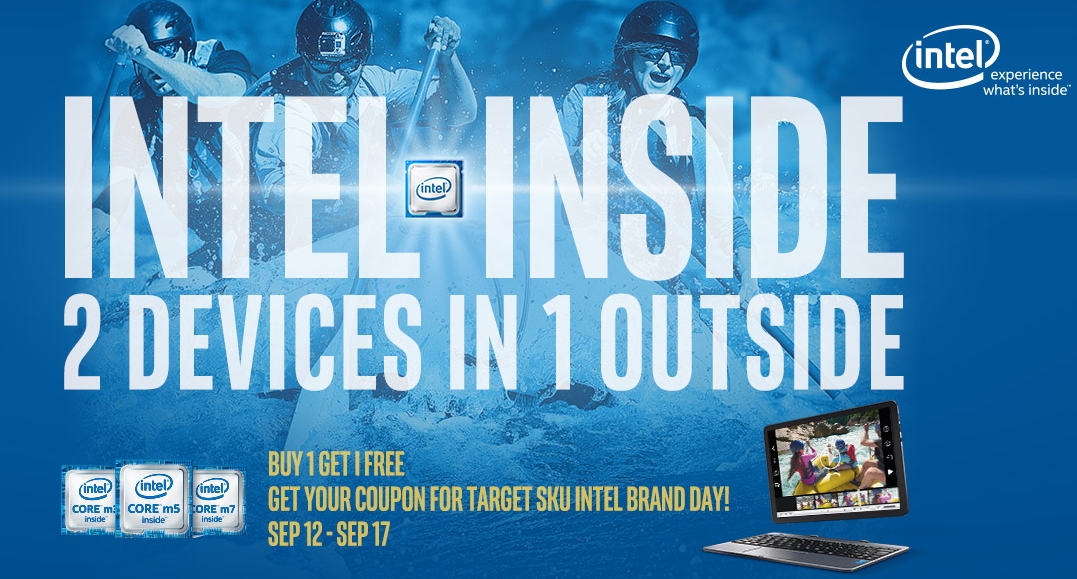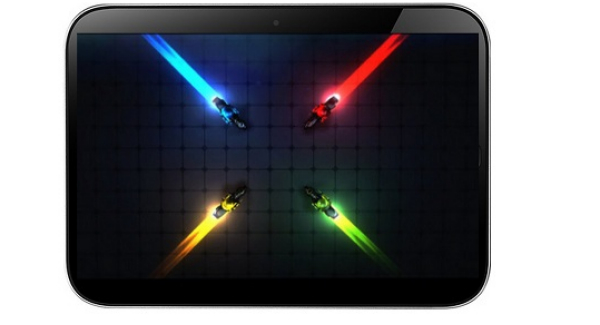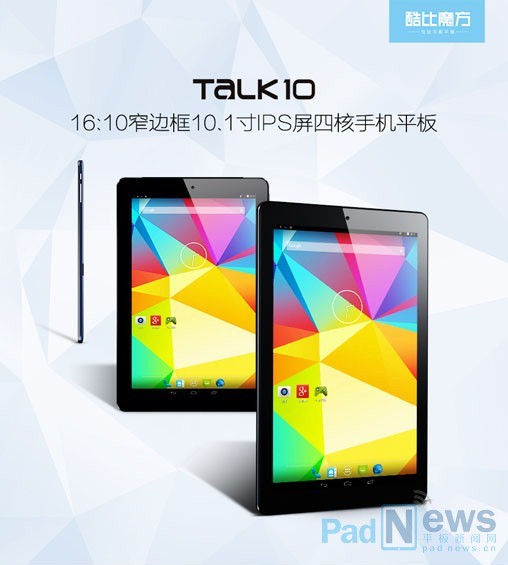We’ve reviewed the ASUS FonePad 7 FE375CG a while ago, but now it’s time to also dedicate some lines of text to the device. We’ll just call it the “new FonePad 7” and this is a model that follows up on the first FonePad 7, that we reviewed last year. It was announced at the end of July and it’s should be in stores this month.
We’re dealing with a 7 inch dual SIM tablet, priced at $177, at least on the Indian market. In Europe we’ve heard it’s priced just under 200 euros. The product comes in black, red, white or gold and it measures 9.8 mm in thickness. It weighs 299 grams and has a plastic matte case, that’s quite bulky, but not bothersome. The first FonePad 7 was made of metal, so the materials have been switched to plastic this time.
The new model is 0.7 mm thinner than the predecessor and also 2 mm shorter, plus 11 mm less wide, quite impressive in my book. It’s also 29 grams lighter, the equivalent of a candybar or so. Upfront there’s an earpiece, a camera, sensors, speakers and moving on at the back, we find the main camera, while at the top there’s a microUSB port. At the bottom there’s the audio jack and microphone, while on the left side there’s a lid, covering up the microSD card slot and two micro SIM card slots.
On the right we find the On/Off button, volume buttons, all of them with OK feedback. The screen is a fingerprint magnet and overall the design is OK for this price, being rather an utilitary design. ASUS FonePad 7 FE375CG features an IPS LCD 7 inch 1280 x 800 pixel display, an Intel Atom Z3560 quad core 64 bit processor, clocked at 1.83 GHz, accompanied by 1 GB of RAM, 8 or 16 GB of storage, as well as 5 GB of ASUS WebStorage.
The microSD card slot offers up to 64 GB of extra storage. There’s a 5 MP back camera, a front 2 MP shooter, stereo speakers and on the connectivity side, we’re pretty much covered, with HSPA+ (42 Mbps download), WiFi, Bluetooth 4.0, Miracast, GPS and Glonass. There’s also an accelerometer, proximity sensor, ambient light sensor and compass. The battery is a Li-Polymer 15 Wh unit, that on paper offers 10.5 hours of functioning time. Our test, with WiFi on and brightness at 50%, we achieved 7 hours and 52 minutes of fun. This is quite an evolution from the 5 hours and its 16 Whr unit.
The battery is OK, close to the performance of the LG G Pad 8.3, which was the tablet of the year in 2013. The charging takes quite a bit, about 3 hours and 25 minutes. Settings include Power Management, with Smart Saving features. There’s Ultra Saving Mode, that disconnects the networks in standby, the Optimized Mode, that keeps network connection and extends battery life. Then there’s the Customized Mode, that allows you to set the brightness, the usage for apps and functions, like email reading, book reading and more. Overall, the battery is OK.
As far as audio is concerned, we’ve got two front stereo speakers and a music player with a very simple UI. The speakers offer loud volume, clear acoustics, good bass, warm voice and overall a good experience. The EQ is the stock one, including options for genres, bass boost and surround. You can also stream music via WiFi and search for a media server. We achieved 80.6 decibels in our test, which is not very impressive, but the real life experience is pretty good.
There’s also the Audio Wizard app available on the device, with 6 presets, like Power Saving, Music, Movie, Recording, Gaming and Speech. Moving on to the video, there’s an IPS LCD available here, with a 1280 x 800 pixel resolution and 7 inch diagonal. The brightness is OK for games and movies, we’ve got wide viewing angles, a crisp image and a slight oversaturation. The pixels are of the RGB Stripe kind and the brightness level is 266 LUX , which is just OK, but not very bright. The Settings for the screen include a Reading Mode, with a special Image and Text sub mode, that makes the white more gentle and a Text Only mode, that goes yellow/beige.
There’s ASUS Splendid preinstalled on the slate, an app that allows you to customize temperature (cool or warm) and there’s also a vivid mode included. You can also enhance the hue and saturation and I would say that the display is OK for casual movie and gaming. Now, the camera! We’re dealing with a tablet with a 5 MP back shooter, a front 2 MP webcam and the UI of the cam features a front cam shortcut on the left, effects like negative, sepia, hue, pixelize and more, plus settings. On the right we find the Gallery, Shutter, Turbo Burst, Video shutter and Modes.
The Settings include white balance, ISO up to 800, exposure, optimization (auto, on, off), resolution (4 megapixels in 16:9, 5 MP in 4:3), anti shake, image quality (fine/standard), touch shooter, self timer, burst (fast, slow, off), focus mode (smart AF, continuous AF and infinity), touch auto exposure and face detection. Then there’s the Video area, with white balance, exposure, Full HD video capture, stabilization, smart brightness, guidelines and location, as well as anti flicker and power saving.
The Modes are also varied, including Auto, Time Rewind (slide time cycle to choose picture), HDR, panorama, night, selfie (with back camera), depth of field (background blur for close ups), smart remove (basically Eraser), All Smiles, Beautification and GIF. Video modes only include Auto and Time Lapse. At the top right of the screen there’s a shortcut to Party Link, that shares your pictures via WiFi Direct.
The camera on this slate is not very fast when it comes to focus or picture taking, but this is a tablet after all. Closeups are good, but the regular pics are blurry and noisy most of the time. If you’re patient enough, you’ll get decent shots, though. Colors tend to feel a bit washed out, in my opinion. The video capture is a total letdown and it certainly doesn’t look like Full HD, although it says that in the options.
It has focus loss, low quality and it has a white hue on top of the image. Overall, this is OK for a tablet camera, but avoid filming with it. There are also a few basic editing options for photos, like filters, frames, crop, rotate and such and moving forward, we analyzed the temperature of this device. We achieved 41.8 degrees Celsius after 15 minutes of playing Riptide GP2, which means the product suffers from slight overheating, but only slightly. The web browser is fast and the keyboard is comfy and includes a numeric row, which is cool. And now let’s check out the benchmarks, in which we compared the new FonePad 7 with the old FonePad 7 and the LG G Pad 8.3, plus the iPad Mini Retina.
As you can see, the new FonePad 7 outperforms its rivals in many tests and even beats the iPad Mini 2 in a test or two, so that’s quite impressive. The device has no lag and runs Dead Trigger 2 easily, so it handles more intensive games. As far as phone calling is concerned, we get features like Smart Dial, Speed Dial, you can record calls and overall the earpiece volume is loud and calls are clear. The signal is also good for both SIMs.
The OS here is Android 4.4.2 with Zen UI on top and a minimalistic and flat approach, that’s good looking. There’s no gloss and there are new icons and fonts to enjoy, also seen on the latest ASUS devices. Widgets are brand new and the dropdown area includes both toggles and notifications, as usual. With the toggles you can boost RAM instantly, access Quick Memo and more. Settings include options for the dual SIM card slots, call settings and Do Not Disturb, as well as ASUS Customized Settigns, for the ASUS Cover interaction and screenshot.
The lockscreen can also be customized with quick access to apps, widgets and shortcuts. Preinstalled apps on the tablet include Amazon Kindle, Aware Hub (basically a series of contextual actions, like sleep or WiFi off, various modes and such). Then there’s Calendar, Data Transfer (from older devices ), Do It Later (to do list on steroids), Email, File Manager, Flipboard, Hangouts, Google Maps, Mirror, My ASUS, Omlet Chat, PC Link (mirror to PC), Quick MEmo, Remote Link (control PC) and Share Link (Share content to nearby devices). The list goes on with Sound Recorder, ASUS Story, SuperNote (new brushes, pens, colors, fonts and options included), Weather, Zinio and ASUS WebStorage.
Finally there’s What’s Next, that’s an intelligent systems for alerts in advance, with calendar integration, text alerts, emails and more. And now it’s time to see if this dual SIM 64 bit tablet is worth your money or not.
Here are the Pros:
- dual SIM tablet
- good price
- powerful hardware
- good audio
- a ton o camera options
- runs any new game
And the Cons:
- not very bright screen
- fingerprint magnet
- log charging time
- weak video capture
- slightly overheats
- bloatware-ish
ASUS FonePad 7 FE375CG gets an 8.9 out of 10 for design, a 9.2 out of 10 for hardware and a 9.5 out of 10 for OS and UI. The final grade is 9.2 out of 10 and this model is a big upgrade from its predecessor and a great back to school product for your kid.
[youtube Hn1uQQNka0g 660 520]
Post Footer automatically generated by Add Post Footer Plugin for wordpress.




